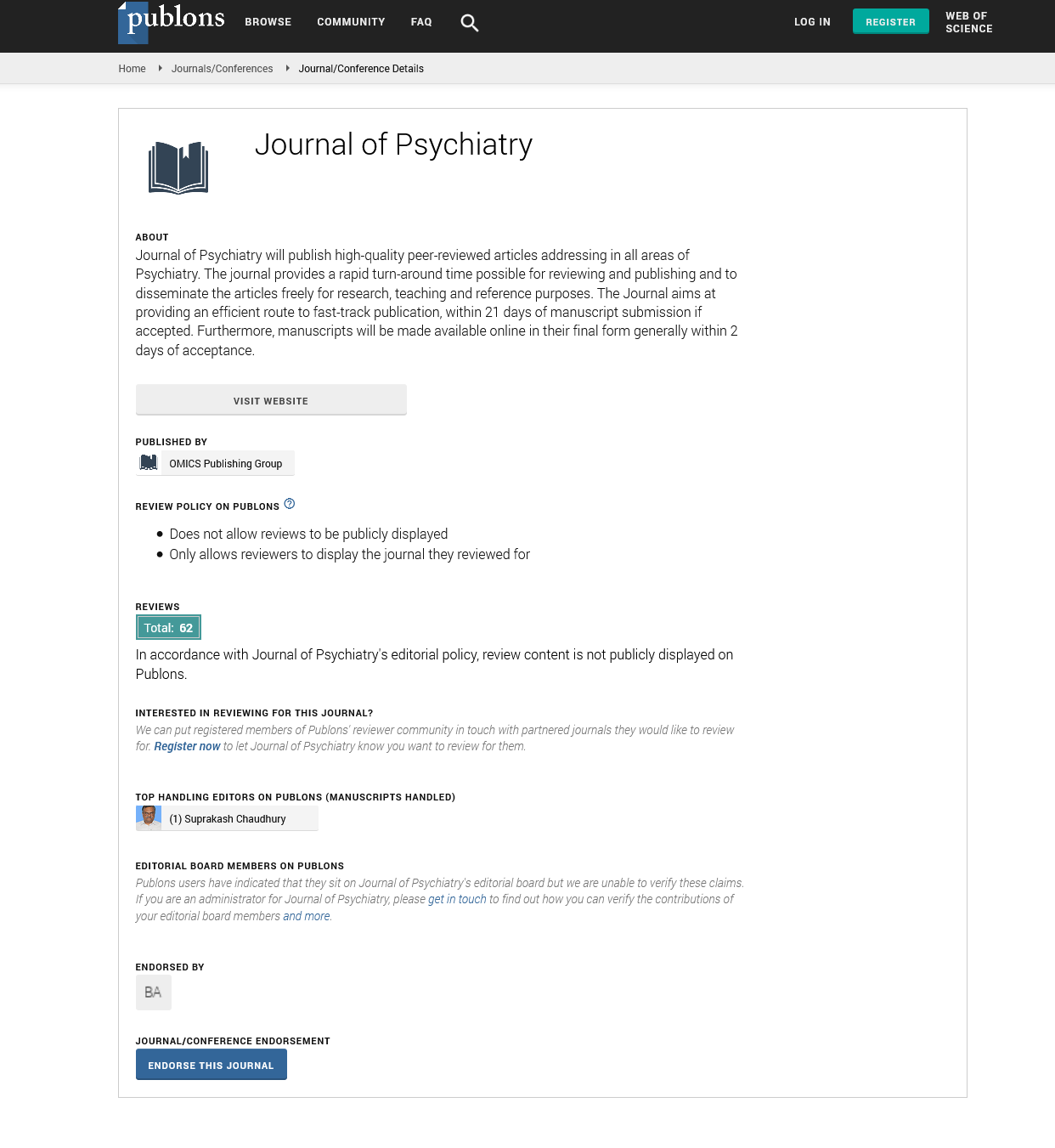PMC/PubMed Indexed Articles
Indexed In
- RefSeek
- Hamdard University
- EBSCO A-Z
- OCLC- WorldCat
- SWB online catalog
- Publons
- International committee of medical journals editors (ICMJE)
- Geneva Foundation for Medical Education and Research
Useful Links
Share This Page
Open Access Journals
- Agri and Aquaculture
- Biochemistry
- Bioinformatics & Systems Biology
- Business & Management
- Chemistry
- Clinical Sciences
- Engineering
- Food & Nutrition
- General Science
- Genetics & Molecular Biology
- Immunology & Microbiology
- Medical Sciences
- Neuroscience & Psychology
- Nursing & Health Care
- Pharmaceutical Sciences
Critical illness Neuropathy and Myopathy an emerging phenomena during COVID-19 circumstances
International Summit on Psychiatry and Psychology - July 25, 2022 | Webinar
July 25, 2022 | Webinar
Hassan Farid
Sheffield Institute of Translational Neuroscience (SITraN),UK
Scientific Tracks Abstracts: J Psychiatry
Abstract:
In December 2019, a new disease called novel coronavirus disease, or COVID-19, was spreading around Wuhan, China, and had become a worldwide pandemic. Although pneumonia-like symptoms predominate, many patients are still at risk of having neurological complications such as strokes or Guillain-Barre syndrome. Moreover, intensive care unit (ICU) treatment and long-term ventilatory support increase the risk of critical illness myopathy (CIM) and polyneuropathy (CIN). CIN and CIM traditionally occur as a result of multiple organ failure, muscle immobility, corticosteroids, and neuromuscular blocking medications. The pathogenic mechanisms of COVID-19 are still not well understood. It is possible that it occurred due to direct viral toxic effects or because of the vigorous mechanical ventilation due to severe respiratory damage in the COVID-19 lungs. Furthermore, other possible suggestions include the inflammatory cytokine storm or the neurotoxic side effects of the medication used to treat COVID-19, such as vigorous steroid therapy. In terms of diagnosis, clinically, the patient is critically ill and has limb weakness or difficulty weaning from the ventilator after non-neuromuscular causes such as cardiac and respiratory diseases have been excluded. Electro-physiologically, for CIN, evidence of axonal motor and sensory polyneuropathy in nerve conduction studies and for CIM, needle electromyography of short-duration, low-amplitude motor unit potentials. Biochemically, high neurofilament light chain and glial fibrillary acidic protein levels were detected in COVID-19 patients who later developed CIM or CIN. Additionally, elevated interleukin-6 at admission is a risk-predictor biomarker for CIN developing in COVID-19. The prevalence is widely variable in the literature, but most of them argue that CIN is more prevalent than CIM during the COVID-19 pandemic. Generally, there is a clear distinction between the outcomes of CIN versus CIM, as patients with CIN have a slower or incomplete recovery and a higher mortality rate, whereas patients with CIM often show complete recovery within 6 months. Therefore, CIN and CIM are important to identify during the COVID-19 era since survivors often present with severe residual disability and persistent exercise limitations several years afterwards.
Biography :
Hassan Farid is a research assistant at the College of Medicine—University of Basrah and a neurology resident at Al-Basrah Teaching Hospital-Basrah Health Directorate—Iraq. Currently, he is a clinical neurology master student at the Sheffield Institute of Translational Neuroscience (SITraN) at the University of Sheffield and Royal Hallamshire Hospital – NHS foundation trust – United Kingdom. Hassan did much research in the fields of neurology, neurophysiology, and COVID-19 infection, with a special interest regarding the neurological manifestation and complications of COVID-19 infection.

